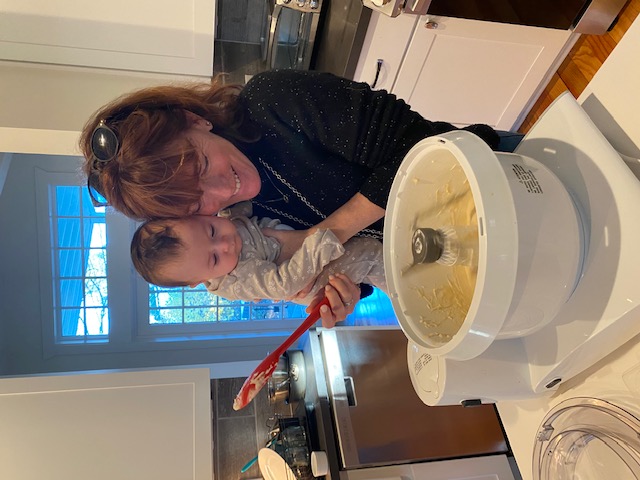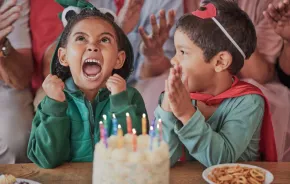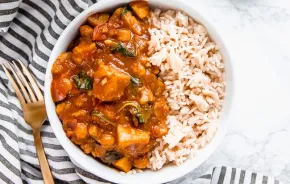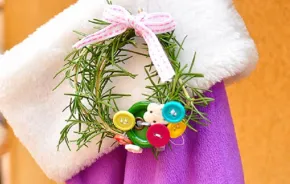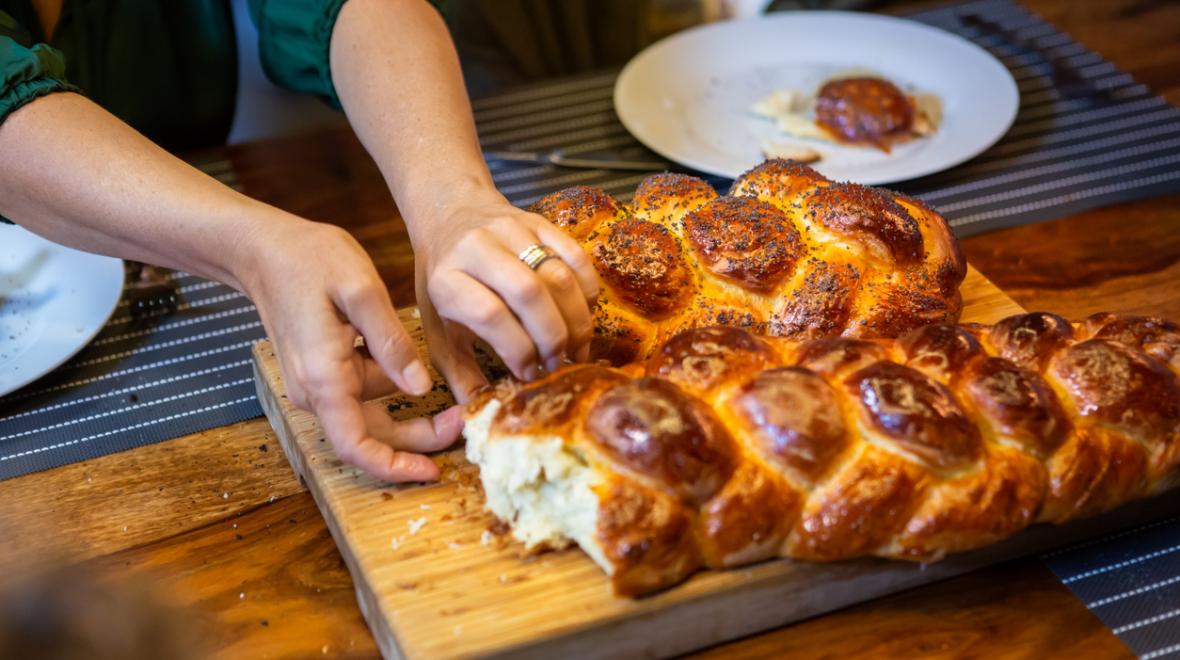
Rosh Hashanah, Jewish New Year, begins at sunset on Sept. 15 this year.
One tradition on Rosh Hashanah is making and eating a loaf of challah. While usually braided, this round bread acts as a symbol of making ourselves and the world more whole. For more information about ways your family can celebrate the Jewish High Holy Days, download the beautiful guide “A Time to Grow” from PJ Library (or purchase a printed copy). “A Time to Grow” serves as a roadmap to the first holidays of the Jewish New Year, and even includes a simple challah recipe.
ParentMap boasts its own staff challah expert, Publisher Alayne Sulkin, who shared her thoughts about the tradition of making challah and the special role it plays within her family.
What is the significance of challah bread (and Shabbat)?
We make two loaves of challah each week to commemorate the fact that the Jews in the desert received a double portion of manna every Friday in honor of Shabbat. What elevates this from a weekly dinner party is that each Friday night, we have a question that relates to the weekly Torah portion. This is an opportunity for everyone of all ages to engage in a singular discussion that is focused around a bigger question about values, how you treat people or leadership.
What does the tradition of making challah mean to you?
There is something magical about the cadence of the work week having a hard stop on Friday afternoon. The transformation is dramatic, as our senses and psyches move into the rhythm of Shabbat each Friday afternoon with the smell of yeast rising. I am forced by the clock to have a hard stop from the frenetic pace of my work week and turn toward the ancient art of making challah, now with my grandchildren Levi and Stella.
My eldest grandson, Levi (age 5), takes full charge of making “chacha” (that is a guttural HAHA, not the Latin American dance). He’s got the name, location and measurements of the ingredients memorized. He and his baby sister Stella (and our dog Bailey) peer through the glass of the oven with shocking patience, waiting for my most unsophisticated method of testing for the challah to be done: my finger, right in the center. It works.
How do you share this tradition with your family?
My mother Shulamit, of blessed memory, was the source of my devotion to the ritual of making Shabbat dinner. Growing up, our Shabbat dinners were really just our immediate family and not necessarily steeped in meaning. But I appreciated the predictability of that family time, uniquely unblemished by the stressors of the weekdays.
Now, our Shabbat dinners most often include many other dear friends and their families. This tradition of the big gathering began more as a mechanism for my eldest and least social child to be surrounded by friends. Now we embrace having our table filled with friends of our kids, or sometimes strangers who become friends, transplanted from their families and wanting that warmth of a family Shabbat table.

Do you have any baking tips for someone who wants to try making challah for the first time?
This challah recipe is solid! A++ — says the hundreds of challah eaters over decades — and the trick is in the touch and feel, not the exact measurements.
Two absolutely key factors for a fabulous challah are:
1. Do not use too much flour. You have to let it be a wee bit sticky for best results.
2. You almost have to feel like the challah is ever so slightly undercooked when you take it out of the oven.
With Alayne’s recipe in hand and her words of wisdom in my ear, I made my first attempt at baking challah. I did my best to follow her “not too much flour” advice, and it turned out well. My braiding needs some work, but what it lacked in beauty it made up for in taste. It was a hit with both of my kids as well all of the others who ran through our house that afternoon. One of my son’s friends stopped in the kitchen and asked if she could have “More of that deliciousness.” I was more than happy to say yes.
Challah bread recipe
Step 1
- Ingredients:
- 3 tablespoons yeast
- 2 cups hot water
- 1/2 cup sugar
- 3 cups flour
- Add yeast, hot water and sugar to a mixer or bowl. Combine together, then add flour. Cover and let rise for about 45 minutes. Punch down.
Step 2:
- Ingredients:
- 1/2 cup sugar
- 3/4 cup veg oil
- 1/2 teaspoon salt
- 4 eggs
- 4 1/2–5 1/2 cups flour
- Add sugar, oil, salt and eggs to the dough. Mix together thoroughly.
- Add the flour, one cup at a time until the dough is not too sticky. (This is a delicate balance!)
- Cover and let the dough rise for 40–50 minutes.
Step 3
- Preheat the oven to 350 degrees
- Punch down the dough and sprinkle flour on your work surface and on the dough to ease rolling out.
- Split the dough into two or three balls, depending on how many challahs you want, and how big.
- Gently roll out one ball into a log shape and slice it into three even segments.
- Braid the segments to form the loaf.
- Put egg wash over the braided challah. Sprinkle the surface with sesame or poppy seeds, if desired.
- Let the loaf sit for 10 minutes and then put it in the oven.
- Bake for 30–35 minutes, until golden on top. Stick a knife in the middle to check if it is baked. Do not overbake!





